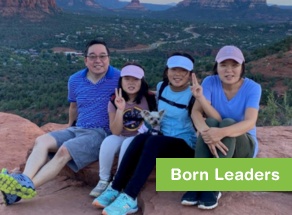
Netflix’s First Inclusion Report Cites Progress, Acknowledges Need to Improve Recruitment of Hispanics
03/26/2021 06:00AM | 2101 viewsNetflix, like other tech companies, has regularly published data about the diversity of its workforce since 2013. Now the streamer has released its first “inclusion report,” in which the company details its strategy to improve diversity — and where it has fallen short.
“We’ve made good progress over the last three years. But let’s be clear, we’re not where we want to be and we need to do better,” Vernā Myers, Netflix’s VP of inclusion strategy, said in the report.
Specifically, she said, “We could do a much better job at recruiting Hispanic or Latinx and other underrepresented folks into all areas of our company, particularly our leadership.” Netflix also needs to learn more about how to incorporate inclusion practices outside of the U.S. and also must develop ways to measure inclusion progress that “go beyond charting demographics and hiring goals by looking at the entire employee experience,” Myers said.
The company’s inclusion report (available at this link) outlines the female, racial and ethnic composition of its streaming workforce as of October 2020:
- The number of U.S. Hispanic employees rose from 6% to 8.1% from 2017 to 2020, while those in leadership roles (director level and above) inched up from 4.5% to 4.9% over the same timeframe. Black employees in the U.S. doubled since 2017 to account for 8% of the workforce and 9% of leadership positions, while those of Asian descent declined from 25.9% to 23.9% and white employees dipped from 46.1% to 45.5%.
- Nearly half of U.S. workforce (46.4%) and 42% of leadership roles (director level and above) are made up of people from one or more underrepresented racial and/or ethnic backgrounds, including Black, Latinx or Hispanic, Indigenous, Middle Eastern, Asian, and Pacific Islander.
- Women comprise 47.1% of the Netflix workforce (up from 40% in 2017), including at the leadership level: directors and above (47.8%), vice presidents (43.7%) and senior leadership (47.6%).
Those changes in the makeup of the employee base come as Netflix more than doubled headcount of its core business in the last three years. At the end of 2017, it had 3,371 full-time streaming employees. As of October 2020, Netflix had about 8,000 full-time streaming employees.
Myers, a longtime diversity and inclusion consultant who joined Netflix in 2018, said the company added inclusion as a cultural value the year before she came on board and found “we weren’t as great as we thought we were, or aspired to be.” Netflix has long fostered a culture of “freedom and responsibility” for employees, as outlined in Reed Hasting’s recent book. Myers said the company is working to incorporate diversity and inclusion values into that culture because “it unlocks our ability to innovate, to be creative, to solve problems.”
On the international front, Myers noted that Netflix last fall hired Cassi Mecchi, formerly with Spotify and Google, as director of inclusion for Europe, the Middle East and Africa. She said the company will hire team members in the Asia-Pacific and Latin America regions in 2021.
Netflix also is working to increase representation by expanding its inclusion recruiting programs team, who train recruiters on how to hire more inclusively, help the company and senior leaders diversify their networks, and create programs like the HBCU bootcamp to create access to emerging talent, according to Myers.
Regarding practices around pay and benefits, Netflix is constantly working to be as “equitable and inclusive as possible,” Myers said. Under the company’s “open compensation” model, the top 1,000 leaders can see how much any employee is paid. That encourages “open discussions about pay disparities,” according to Myers. Netflix’s HR team also routinely analyzes pay across the company to look for disparities, including an annual compensation review, she added, and “when we find pay gaps, we rectify them.”
Other examples of Netflix’s diversity and inclusion work include the company’s pledge to allocate 2% of its cash on hand to banks and other financial institutions that directly support Black communities in the U.S.; improving the accessibility of offices and services; investing in first-time filmmakers and increasing representation on productions; and creating access for indigenous creators in Australia and for underrepresented directors in the U.K.
To date, Netflix’s inclusion team has held 120 workshops for teams and employees of all levels on topics like privilege, bias and intersectionality. The company also has established 15 Employee Resource Groups (ERGs), to create a “sense of inclusion and belonging,” serving Latinx, Black, veteran, trans and disability communities, among others.
As part of the report, titled “Sowing the Seeds: Inclusion Takes Root at Netflix,” the company produced a video with execs discussing the topic (below and at this link) featuring Myers; Ted Sarandos, co-CEO and chief content officer; CMO Bozoma Saint John; Kabi Gishuru, director of inclusion recruiting programs; Aaron Mitchell, HR director for Netflix Animation; Rochelle King, VP of creative production; Aaron Lynch, creative marketing manager; Frances Abebreseh, communications manager; Haydn Palmer, creative assistant; Gena-mour Barrett, editorial and publishing manager; and Cole Gavin, director of content acquisition.










Post your Comment
Please login or sign up to comment
Comments